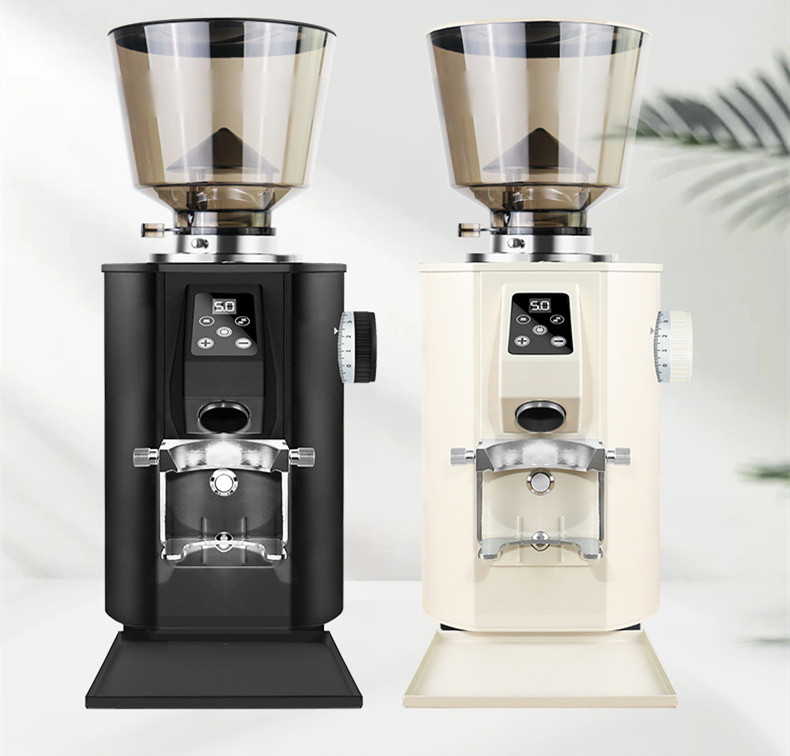Sustainable Coffee Grinding: Aligning Practices with Environmental Goals
The journey to a sustainable coffee routine begins at the grinding stage. By adopting mindful techniques and prioritizing eco-friendly choices, users can minimize waste, conserve energy, and reduce their carbon footprint. Below are actionable strategies to integrate sustainability into daily coffee grinding habits.
1. Select Grinders with Longevity and Recyclability in Mind
The durability of a coffee grinder directly impacts its environmental footprint. Opt for models constructed from materials that resist wear and tear, such as stainless steel or high-grade aluminum. These materials not only extend the appliance’s lifespan but also reduce the need for frequent replacements, curbing resource extraction and manufacturing emissions.
Avoid Disposable Components: Prioritize grinders with replaceable parts, like burrs or hoppers, to prevent discarding entire units due to minor malfunctions. This approach aligns with circular economy principles by encouraging repair over replacement.
Energy-Efficient Motors: For electric grinders, choose models with low-wattage motors or automatic shutoff features. These designs reduce electricity consumption during operation, lowering household energy demand and associated greenhouse gas emissions.
2. Optimize Grind Size to Reduce Coffee Waste
Grinding coffee beans too finely or coarsely can lead to over-extraction or under-extraction, resulting in unsatisfactory brews and wasted grounds. Precision in grind size ensures optimal flavor extraction, minimizing the need for re-grinding or discarding unused coffee.
Adjustable Settings: Use grinders with clear grind size markers to tailor outputs for different brewing methods. For instance, coarse grinds suit French presses, while fine grinds work best for espresso. This adaptability prevents overuse of beans.
Batch Grinding: Measure beans based on exact serving sizes to avoid excess. A standard 12-ounce cup requires approximately 20 grams of coffee; grinding this amount at once reduces leftovers that may stale.
Store Freshly Ground Coffee Properly: Transfer grounds to airtight containers immediately after grinding to preserve freshness. Exposure to air accelerates oxidation, leading to flavor loss and increased waste if the coffee is discarded prematurely.
3. Repurpose Spent Coffee Grounds for Eco-Friendly Uses
Discarded coffee grounds are a hidden resource with multiple sustainable applications. Instead of throwing them away, consider repurposing them to reduce landfill contributions and support local ecosystems.
Composting: Add used grounds to compost bins to enrich soil with nitrogen, phosphorus, and potassium. Coffee grounds also attract earthworms, which aerate soil and enhance nutrient absorption. If composting isn’t an option, local community gardens may accept donations.
Natural Pest Repellent: Sprinkle dried grounds around plants to deter slugs, snails, and ants. The caffeine and acidic compounds in coffee act as a natural barrier without harming beneficial insects.
DIY Cleaning Agents: Mix grounds with water or vinegar to create an abrasive scrub for cleaning pots, pans, or grimy surfaces. Their texture helps remove stubborn residues without synthetic chemicals.
4. Maintain Grinders to Extend Usability and Reduce E-Waste
Regular upkeep ensures grinders operate efficiently for years, delaying the need for replacements and reducing electronic waste. Simple maintenance routines can significantly prolong an appliance’s life.
Clean Burrs and Chambers: After each use, brush away residual grounds to prevent clogging and bacterial growth. For electric grinders, unplug the device and use a soft brush to dislodge stuck particles. Avoid water to prevent rust.
Lubricate Moving Parts: Apply food-grade lubricant to burrs or gears (if applicable) to reduce friction and wear. This step is particularly important for manual grinders, where smooth operation depends on well-maintained components.
Store in Dry Environments: Keep grinders away from moisture to prevent corrosion or mold growth. A dedicated kitchen cabinet or pantry shelf minimizes exposure to humidity and temperature fluctuations.
5. Pair Grinding with Low-Impact Brewing Methods
The sustainability of grinding extends to brewing choices. Methods like pour-over, cold brew, or AeroPress require minimal equipment and produce no single-use waste, complementing eco-friendly grinding practices.
Reusable Filters: Ditch paper filters for stainless steel or cloth alternatives to eliminate deforestation linked to paper production. These filters are dishwasher-safe and last for years with proper care.
Non-Toxic Materials: Choose brewers made from glass, ceramic, or food-grade stainless steel to avoid chemical leaching. Plastic components, especially when exposed to heat, may release microplastics into beverages over time.
By integrating these strategies, coffee enthusiasts can transform grinding into a sustainable practice. From material selection to waste reduction, every decision contributes to a greener planet without sacrificing the quality of the brew.


